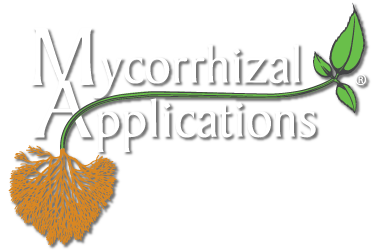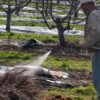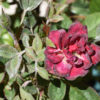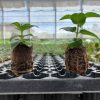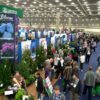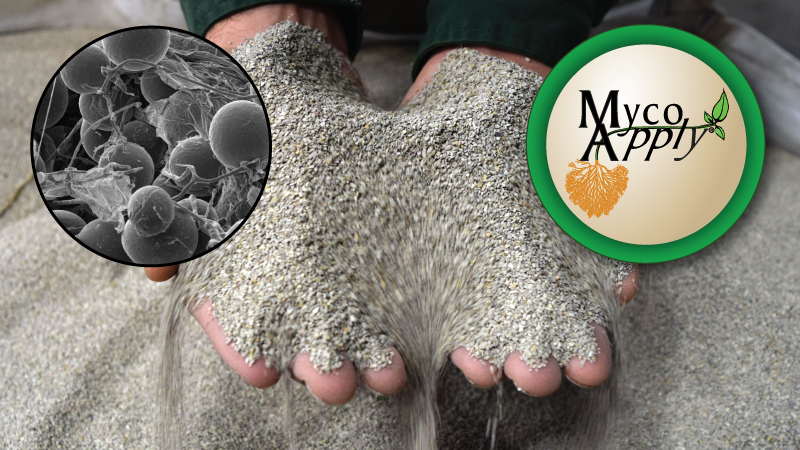
Endomycorrhizal fungi (also known as arbuscular mycorrhizal fungi, or AMF) are beneficial microscopic organisms that live in the soil and have evolved a symbiotic relationship with approximately 85% of the world’s plant species over the past several hundred million years. These fungi predate the evolution of terrestrial plants, and it was the partnership with mycorrhizal fungi that allowed plants to begin to colonize dry land and create life on Earth as we know it.
How does this relationship between beneficial fungus and plants work?
The AMF symbiotic relationship centers on the plant’s ability to produce carbohydrates through photosynthesis and share some of these sugars with the fungus in return for otherwise unavailable water and nutrients that are sourced from the soil or growing media by the extensive network of mycelial hyphae produced by the fungus. It’s a two-way relationship of sharing resources between two species, thus a classic symbiotic mutualism. The endomycorrhizal fungi rely on the plant, and the plant’s performance and survival are enhanced by the fungus.
How is this symbiotic relationship established?
Endomycorrhizal fungi can colonize plants from three main sources of inoculum: spores, colonized root fragments, and vegetative hyphae. Collectively, these inoculants are called “propagules,” and this is the standard unit of measure that is listed on most commercially available mycorrhizal products.
To colonize plant roots, these propagules must be present in the substrate and in close proximity to actively growing roots of a compatible plant. The growing root tips emit root exudates as they push through the substrate, which signal the fungi to colonize the roots and establish the symbiosis. Once the roots are colonized, then the process is self-sustaining as the vegetative bodies of the AMF ( the fungal mycelium) continue to grow with the plant’s root system and additional spores and hyphae are produced.
To inoculate plants grown professionally or in a home garden, AMF propagules can be incorporated into the substrate prior to or during planting or they can be top-dressed on the surface and watered into a porous substrate. They can also be applied as a dip or slurry at the time of sticking a cutting, seeding, or at the time of transplanting. The propagules can also be applied as a drench to the soil and watered-in, applied to the outer surface of the rootball before transplanting, or used in transplant hole and backfill soil.
How can professional growers utilize this symbiosis?
The application rates for endomycorrhizal fungi are based upon the number of propagules per volume of soil for container-grown plants and per area of coverage for turf and landscape plantings. Therefore, large containers will require more propagules than smaller containers. For a professional grower, it is more cost-effective to treat plants early in the crop cycle when they are growing in smaller volumes of soil, and will require fewer propagules per plant to achieve colonization. Germination of the spores occurs relatively quickly after contact with growing roots, but full colonization of the roots can take several weeks. Plants will reap the full benefits of the colonization within 6-8 weeks after application. Some plant species will demonstrate the benefits of mycorrhizal colonization sooner than others.
The mycorrhizal fungi colonize the developing roots by growing into the plant’s root cells to obtain carbohydrates and simple sugars (food). The tiny fungal mycelial threads grow throughout the available soil volume and effectively “mine” the soil for water and nutrients that the plant cannot access or absorb on its own. The enhanced water uptake helps the plant to resist drought conditions and ensures faster plant response if its roots are damaged by adverse conditions (drought, water-logged conditions, high salts or high soil temperatures). The mycelium also secretes organic compounds that help solubilize nitrogen, phosphorus and other macro- and micronutrients from the substrate. These nutrients are actively transported by the fungus to the plant to produce proteins and other components needed for vigorous growth and development.
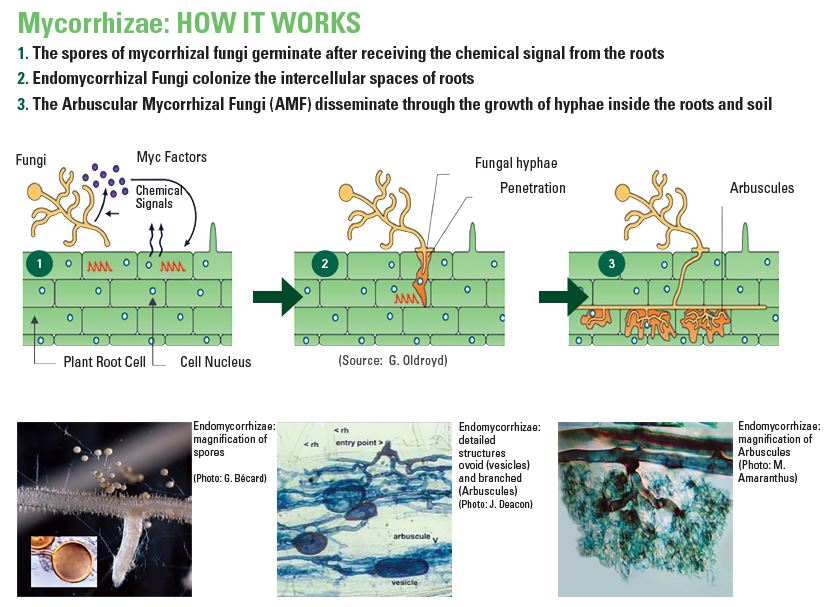
Why do horticulturists and professional growers need mycorrhizal fungi?
With traditional input-intensive growing protocols, nursery or greenhouse grown plants are produced under optimum conditions and may be able to perform sufficiently in the short-term, without the assistance from mycorrhizal fungi. However, water restrictions in production and landscapes will encourage growers and consumers to be water-wise and utilize mycorrhizae as part of our water management programs and promotions. Trials have demonstrated that the use of mycorrhizae can reduce water requirements significantly by increasing the plant’s ability to utilize and store water through the AMF mycelial network of hyphae. Consequently, retailers and growers have realized reduce shrinkage due to drought and stressful conditions in the retail chain.
There is additional pressure to reduce the runoff of nutrients, especially nitrogen and phosphorus, from nurseries, greenhouses, and landscapes. Both of these essential plant nutrients are accessed and delivered to the plants by mycorrhizal fungi, and in many instances these inputs can be reduced significantly by utilizing AMF without a noticeable reduction in crop time, appearance, or performance.
Excess water usage results in more runoff and excess fertilization results in more pollution of the environment. Many conscientious growers welcome beneficial biological solutions like mycorrhizal fungi to help reduce these environmentally harmful growing techniques, and this type of technology is becoming a major part of the toolkit to increase the overall environmental sustainability of the horticulture industry in the long run.
Are professional endomycorrhizal products available for greenhouse and nursery growers?
Mycorrhizal Applications, the leading producer of mycorrhizal propagules in the US, produces a suite of professional products that make it easy for growers to trial mycorrhizae and to incorporate it into their production programs. Their flagship “MycoApply” endomycorrhizal inoculum products contain four different Glomus species of AMF for optimal diversity and performance under most growing conditions and crops. These flagship endomycorrhizal inoculant products are MycoApply Endo and MycoApply Ultrafine Endo. MycoApply Endo is a granular formulation containing 60,000 AMF propagules per pound and is ideal for soil incorporation, as the granular consistency blends evenly with growing media and soils. MycoApply Ultrafine Endo is a suspendable powder containing 130,000 AMF propagules per pound which can be soil-incorporated or prepared as a liquid suspension for use as a soil drench or plug tray dip. Whether incorporating the granular product into your media or drenching with the suspendable powder formulation, it is important to get the propagules in the root zone as soon as possible and as early in the crop cycle as possible.
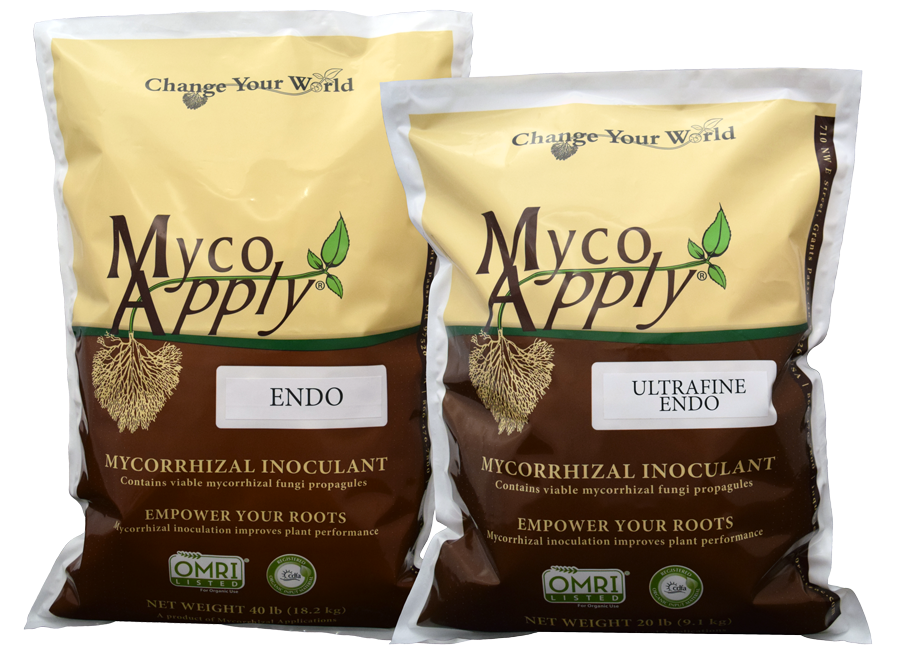
Where can I learn more?
Plants and mycorrhizal fungi have had a long-term relationship for over 400 million years and we are just beginning to understand this relationship better and are now employing this symbiotic mutualism in professional horticulture. You can learn more about mycorrhizae by going to Mycorrhizal Applications’ website (https://mycorrhizae.com/) or by contacting Mycorrhizal Applications directly at 1 (866) 476-7800. Resources and literature such as Fungicide Interactions with Mycorrhizal Fungi, and the Mycorrhizal Status of Plant Families and Genera are available through their website or by contacting them directly, in order to help you determine how to include mycorrhizal fungi most effectively into your professional growing protocols. MycoApply products are also available through many horticultural distributors throughout North America.
Hugh A. Poole, Ph. D.
Horticultural Technical Consultant
September 12, 2017
©2017 Mycorrhizal Applications LLC. All rights reserved.
